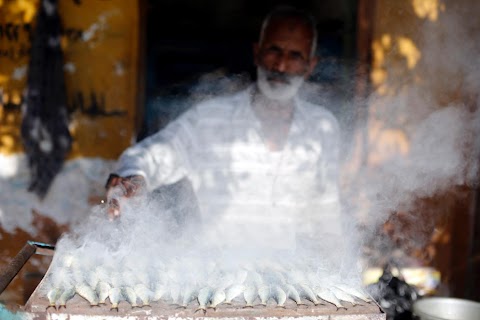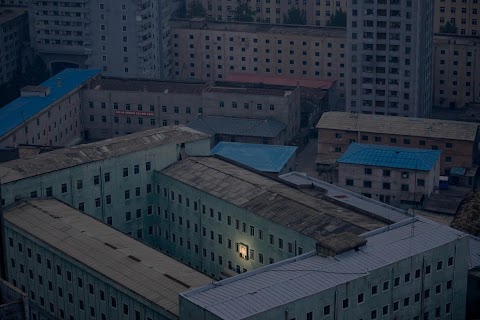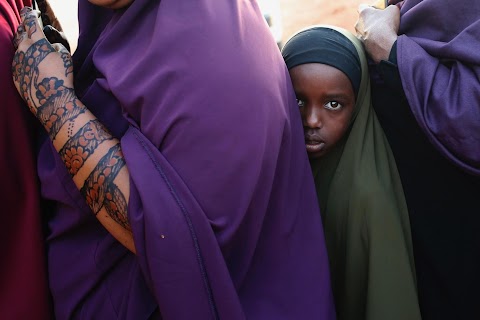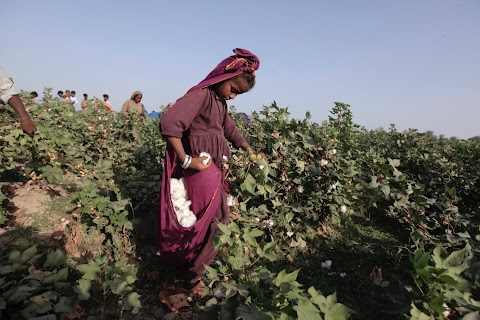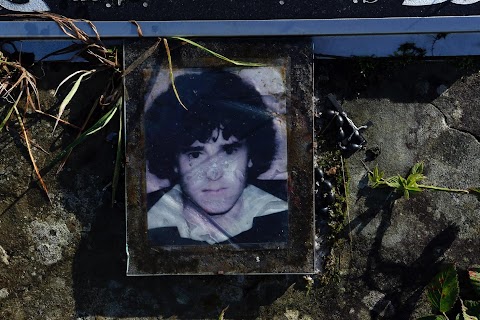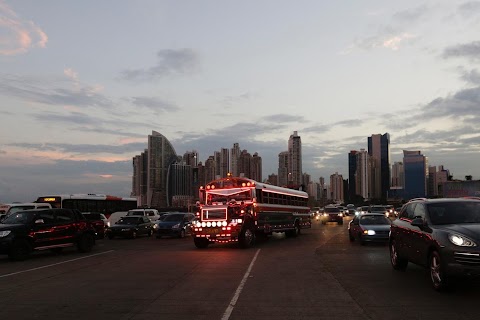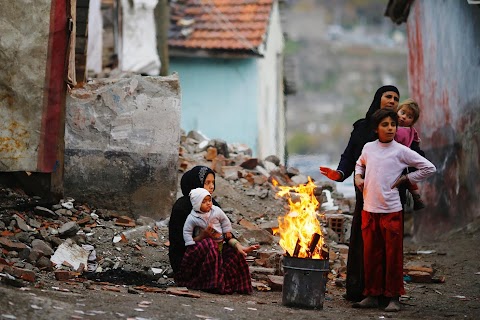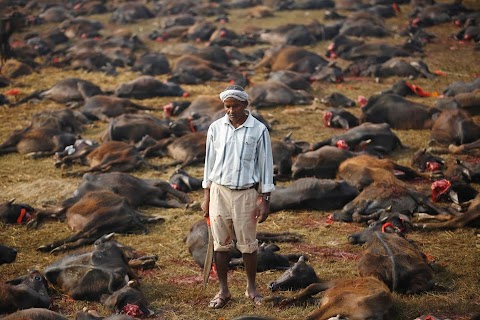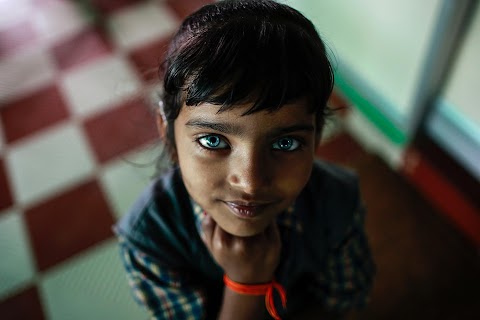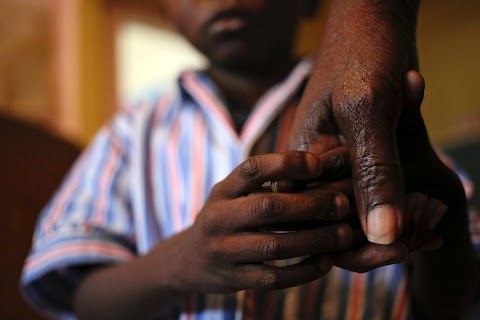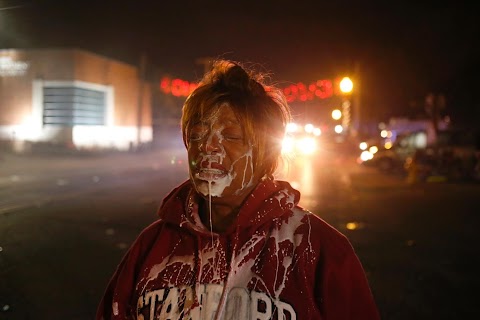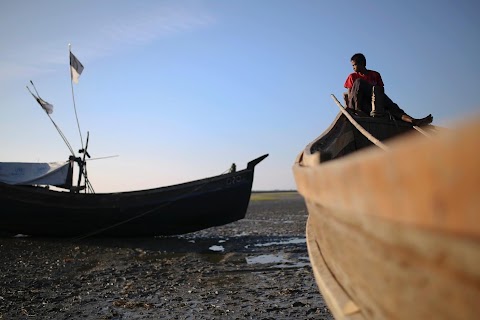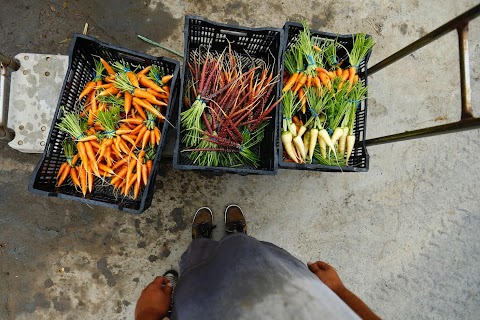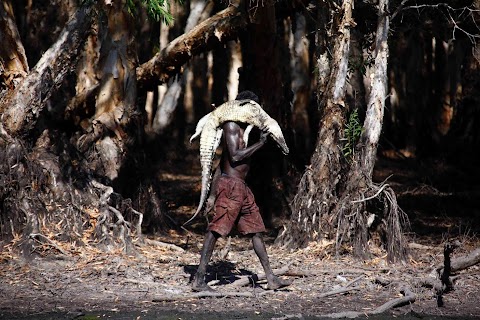
Hunting for crocodiles
 David Gray
David Gray
Australian Aboriginal hunter Roy Gaykamangu of the Yolngu people carries a crocodile he has just shot dead along the edge of an oxbow lake near the 'out station' of Yathalamarra.
Closer to Bali than Sydney, the Arnhem Land reserve covers an area of around 37,000 sq miles (97,000 sq kms), has a population of around 16,000 and access for non-Aborigines is by invitation only.

For more than 10 years photographer David Gray has dreamed of photographing the daily lives of Aboriginal Australians in the northern-most tip of the Northern Territory, Australia's rugged "Top End".
Johnny, Roy’s three-year-old grandson looks at the crocodiles and a native Australian lizard called a Goanna that have been killed at a billabong near Yathalamarra.

Australia's aborigines are the custodians of the longest unbroken cultural tradition on earth, having migrated Down Under from Africa via Asia between 40,000 and 60,000 years ago.
But the arrival of European settlers in the 18th century marked the beginning of a painful disenfranchisement. Massacres are still tearfully remembered and today the majority of Aborigines live in abject poverty.
Slideshow

Four-year-old Gregory, grandson of Australian Aboriginal hunter Robert Gaykamangu,takes a bath in an old insecticide container at the 'out station' of Ngangalala.

Robin Mildjingi sits on an armchair with his grandson Gasier.

Members of the community of Ramingining stand next to a machine used to pay for fuel.

Children play on the dirt road that is the main street in the community of Ramingining.

People dance during an initiation ceremony at the 'out station' of Yathalamarra.

A man dances as he participates in an initiation ceremony.

Hunter Bruce Gaykamangu of the Yolngu people wears a crucifix that sits just above his initiation scar while searching for Magpie Geese.

The hunters Bruce (left) and Robert Gaykamangu stand on the bonnet of their car looking for potential prey at a billabong.

The bare feet of Robert Gaykamangu can be seen as he stands next to a billabong.

Robert Gaykamangu carries a shotgun hunting Magpie Geese in a billabong.

He carries a Magpie Goose he successfully shot.

Roy Gaykamangu hunts for a crocodile.

Marcus Gaykamangu lifts a baby crocodile above his head after capturing it at a billabong.

Marcus carries an Australian native lizard called a goanna over his shoulder.

Roy Gaykamangu sits by a billabong and cuts up a crocodile.

Roy sits with a cut up crocodile.

Norman Daymirringu (right) and friend James Gengi load the leg of a buffalo, which they intend to cook, into their vehicle after they discovered it dead on the side of a dirt track.

Australian Aboriginal rock art can be seen in a cave near the township of Jabiru located near Arnhem Land.
"I walked away with a unique insight into their culture."
We are deep in a forest crowded by Australian paperback trees, the air thick with humidity but eerily silent save for the screeching of tropical birds, when Marcus shouts: "Look, crocodiles!"
As a Reuters photojournalist, I'm a trained observer, but I can't see any crocs. I can't see anything beyond mud and what little water is left in the small billabong.
Aboriginal hunters Marcus and Roy, a father and son team, take off running past a herd of water buffalo and by the time I catch up Roy is standing ankle-deep in murky water, his shotgun pointed at the surface. Hang on a minute: wasn't your son pointing at crocodiles in that water ten seconds ago? Is this safe?
Roy treads carefully as the water rises to his knees, seeming for a moment to lose sight of his prey. Then in one swift action he steps back, takes aim and shatters the outback calm, and a crocodile, with a single booming shotgun blast.
I am definitely not in Sydney anymore.
For more than 10 years I have dreamed of photographing the daily lives of Aboriginal Australians in the northern-most tip of the Northern Territory, Australia's rugged "Top End".
Their Arnhem Land reserve - closer to Bali than Sydney - covers an area of around 97,000 sq km (37,500 sq miles), has a population of around 16,000 and access for non-Aborigines is by invitation only.
Australia's Aborigines are the custodians of the longest unbroken cultural tradition on Earth, having migrated Down Under from Africa via Asia between 40,000 and 60,000 years ago, and connection to the land is practically written into their DNA.
But the arrival of European settlers in the 18th century marked the beginning of a painful disenfranchisement. Massacres are still tearfully remembered and today the majority of Aborigines live in abject poverty.
Last year, while on patrol with the Indigenous Australian Army unit known as NORFORCE, I met Sergeant Norman Daymirringu, a Yolngu Aborigine, who invited me to go hunting with him near Ramingining, located a bumpy and dusty 600 km drive east of Darwin.
Norman is allowed by tradition to share his ancient culture with those he deems worthy, and I was honoured to have been told the Yolngu people's creation stories and shown their sacred sites.
But entering Arnhem Land as a "White Fella" means changing gears and seeing the world through a completely different set of eyes, a great challenge for a photographer.
For example, an outsider might struggle to understand a site such as "Dog's Tongue", an orange rock amid a barren salt pan, but for Norman it is an integral part of the creation of the universe.
The rock has tipped over from its normal position and Norman, as custodian of the land, affords me the rare honour of watching as he puts it back in place, where it has stood for countless millennia. At Yathalamarra, a community consisting of around a dozen houses, we pick up some relatives for the hunt and head on foot to an isolated billabong.
With the sun blazing and temperatures reaching 40 degrees Celsius, or 104 Fahrenheit, I am getting pessimistic, when suddenly Roy fires his shotgun. At his feet lies a dead crocodile.
Roy pulls the beast from the water, while Marcus keeps lookout. Not far from the shoreline the water starts moving. Suddenly Marcus pounces and, from just beneath the surface, he pulls another crocodile, this one a bleating baby.
Roy is nervous about crossing the billabong carrying a heavy dead crocodile, but wanders downstream and grabs a boat hidden in the bushes. Using a stick as a paddle he navigates towards us, throwing the two crocs onto the muddy shore.
Wow, its over, I think. We can head off with a great catch and potential feast awaiting. Roy has other ideas: "It's easier to carry them without all that skin," he tells me.
Any butcher would have been extremely impressed with the skill he showed at filleting this massive beast. The baby was carried out alive. As we are leaving, Roy wraps the intestines in leaves, as nothing that can be eaten is wasted, and he and his sons walk the few kilometres back to the car with crocodile meat and a goanna lizard slung over their shoulders.
As for me, I walked away with a unique insight into their culture and some photographs that not many others have had the privilege of taking.

An aerial view shows a river system in Australia's Northern Territory.
